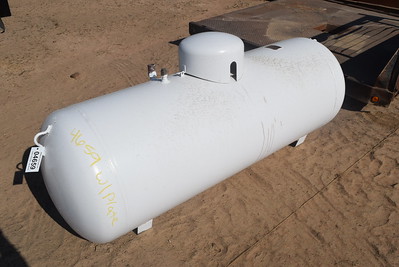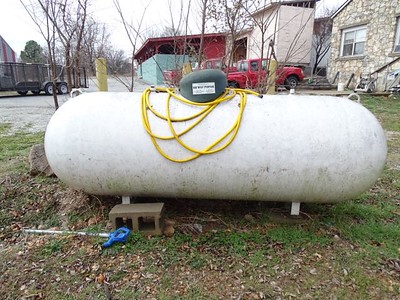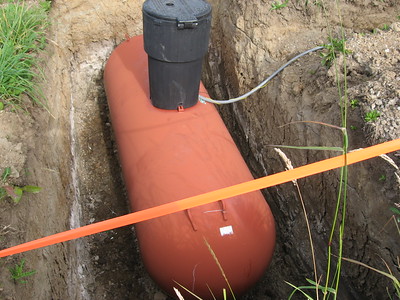
Propane has long been a popular and reliable fuel source for millions of households and businesses worldwide. As a clean-burning and efficient fuel, it powers a variety of appliances, from home heating systems to outdoor grills. If you’re considering investing in a propane tank, or if you’re already a propane user, understanding the weight of your propane tank is crucial for safety, transportation, and usage.
This comprehensive guide will explore the factors that contribute to a 250-gallon propane tank’s weight, safety considerations, and how to determine the remaining propane in your tank. Let’s dive in and explore the fascinating world of propane tanks to help you make informed decisions and maximize the benefits of this versatile fuel source.
Different Types of Propane Tanks
Propane tanks come in various shapes and sizes, with capacities ranging from small portable cylinders to large storage tanks. Primarily, propane tanks are classified into two categories: above-ground and underground tanks.
Above-ground tanks
These tanks are typically installed on the surface and are visible. They are often used in residential and commercial settings where space is not a constraint, and easy access is preferred. Above-ground tanks can be installed quickly and require minimal site preparation, making them a popular choice for many users.
Underground tanks
As the name suggests, underground tanks are buried beneath the ground and are less visible. These tanks are often used when property aesthetics or space constraints are a concern. While underground tanks require more extensive site preparation and installation, they benefit from being protected against harsh weather conditions and potential vandalism.
Materials Commonly Used for Propane Tanks
Steel
Steel is the most common material used for propane tanks. It is strong, durable, and can withstand high pressure, making it an ideal choice for propane storage. The weight of a steel tank can vary depending on the thickness of the steel used and the overall dimensions of the tank.
Composite materials
Composite propane tanks are made from a blend of materials, typically including fiberglass and plastic. These tanks are lighter than their steel counterparts, making them easier to handle and transport. However, they may not be suitable for all applications due to their lower pressure resistance.
Factors That Contribute to Propane Tank Weight
Several factors influence the weight of a propane tank, including the tank material, its size, and dimensions, and the weight of the propane itself.
Tank material
As mentioned earlier, steel and composite materials are the primary materials used for propane tanks. Steel tanks tend to be heavier than composite tanks, but they offer higher pressure resistance and durability.
Tank size and dimensions
Propane tanks come in various sizes, with the capacity typically measured in gallons. A larger tank will have more substantial dimensions and, consequently, a higher overall weight.
Weight of Propane Per Gallon
The weight of propane itself is a critical factor in determining the overall weight of the tank. Propane weighs approximately 4.24 pounds per gallon at room temperature (60°F or 15.6°C). This weight can vary slightly depending on the temperature and atmospheric pressure.
The effect of temperature on propane weight
Temperature can significantly affect the weight of propane in a tank. As the temperature rises, propane expands and becomes lighter, while the opposite occurs when the temperature falls. It is essential to consider the ambient temperature when weighing a propane tank or estimating its remaining contents.
The 250-Gallon Propane Tank: Specifications and Weight
A 250-gallon propane tank is a popular size for residential and small commercial applications. It offers a balance between capacity and space requirements, making it a suitable choice for many users. In this section, we will discuss the typical dimensions, shape, and weight of a 250-gallon propane tank.
Typical dimensions and shape
A 250-gallon propane tank typically measures around 7.5 feet in length, 30 inches in diameter, and has a cylindrical shape. These dimensions can vary slightly depending on the manufacturer and the tank’s specific design.
Weight of an empty 250-gallon propane tank
An empty 250-gallon propane tank, also known as the tank’s “tare weight,” can range from 500 to 800 pounds, depending on the material used. Steel tanks are generally heavier, while composite tanks are lighter.
Weight of a full 250-gallon propane tank
A full 250-gallon propane tank contains approximately 80% of its total capacity in liquid propane, which equates to 200 gallons of propane. Considering that propane weighs 4.24 pounds per gallon at room temperature, a full 250-gallon propane tank can weigh around 1,348 to 1,648 pounds (including the tank’s tare weight).
Range of weights depending on tank material and propane volume
The weight of a 250-gallon propane tank can vary significantly based on the material used for the tank and the amount of propane it contains. Below is a summary of the potential weight range:
- Empty steel tank: 600-800 pounds
- Empty composite tank: 500-700 pounds
- Full steel tank (200 gallons of propane): 1,448-1,648 pounds
- Full composite tank (200 gallons of propane): 1,348-1,548 pounds
Safety Considerations When Handling Propane Tanks
Proper handling and management of propane tanks are essential for ensuring safety and preventing accidents. Here are some guidelines to follow when dealing with propane tanks:
Proper storage and transportation
Store propane tanks in a well-ventilated area, away from direct sunlight and heat sources. Ensure that the tanks are secured in an upright position and cannot tip over. When transporting a propane tank, use a suitable vehicle and secure the tank to prevent it from moving around.
Guidelines for lifting and moving propane tanks
Always use proper lifting techniques when handling propane tanks to avoid injuries. Bend at your knees, not your waist, and lift with your legs while keeping the tank close to your body. If a tank is too heavy to lift manually, use appropriate equipment, such as a hand truck or a forklift.
Signs of a damaged or compromised tank
Regularly inspect your propane tank for signs of damage or wear, such as rust, dents, or leaks. If you suspect a problem, contact a professional propane service provider for assistance.
How to Determine the Remaining Propane in a Tank
Monitoring the amount of propane left in your tank is essential for ensuring uninterrupted service and planning timely refills. Here are some methods for determining the remaining propane in your tank:
Gauge systems
Many propane tanks come equipped with a gauge that displays the percentage of propane remaining in the tank. These gauges can be mechanical (float gauges) or electronic (digital gauges). While gauges provide a convenient method for monitoring propane levels, they may not always be entirely accurate, especially for older or damaged tanks.
Estimating propane levels based on appliance usage
If you know the propane consumption rate of your appliances, you can estimate the remaining propane in your tank based on the duration of appliance usage. Keep track of the hours each appliance is used and multiply the total hours by the appliance’s consumption rate. While this method is less accurate than weighing the tank or using a gauge, it can provide a rough estimate to help you plan for refills.
Conclusion
Understanding the weight of a 250-gallon propane tank is essential for safe handling, transportation, and usage. By considering factors such as tank material, size, dimensions, and propane weight, you can ensure that you are well-prepared to manage your propane supply effectively. Additionally, adhering to safety guidelines and monitoring the remaining propane in your tank will help you maintain uninterrupted service and prevent potential hazards.
In this comprehensive guide, we have explored the factors that contribute to a 250-gallon propane tank’s weight, different types of propane tanks, safety considerations, and methods for determining remaining propane. With this knowledge, you can confidently make informed decisions about your propane usage and maximize the benefits of this versatile fuel source. Remember to always prioritize safety, stay informed, and enjoy the convenience and efficiency that propane brings to your home or business.

Mike is an experienced propane technician with over 15 years of professional experience in the field. He has dedicated his career to helping customers with their propane needs, from installation to maintenance and repair. Together with Jeremy, he co-founded this website to provide useful information and guidance to customers seeking reliable propane services.



